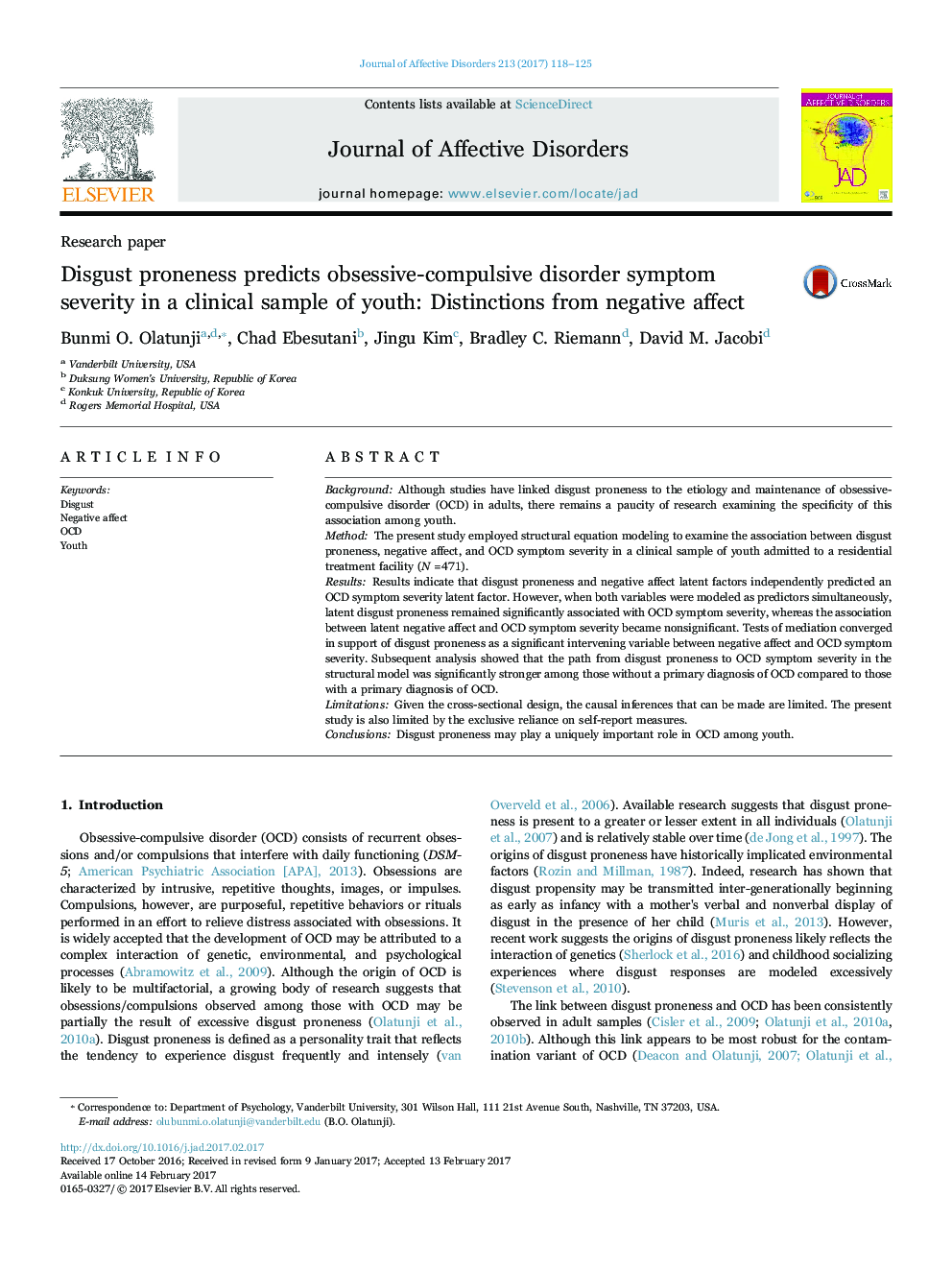| کد مقاله | کد نشریه | سال انتشار | مقاله انگلیسی | نسخه تمام متن |
|---|---|---|---|---|
| 5722235 | 1608112 | 2017 | 8 صفحه PDF | دانلود رایگان |
- Disgust proneness and negative affect predict OCD symptom severity in youth.
- Disgust proneness predicts OCD symptom severity above and beyond negative affect.
- Disgust proneness mediates the association between negative affect and OCD symptom severity.
- Disgust proneness is a stronger predictor of symptom severity for those without a primary OCD diagnosis.
BackgroundAlthough studies have linked disgust proneness to the etiology and maintenance of obsessive-compulsive disorder (OCD) in adults, there remains a paucity of research examining the specificity of this association among youth.MethodThe present study employed structural equation modeling to examine the association between disgust proneness, negative affect, and OCD symptom severity in a clinical sample of youth admitted to a residential treatment facility (N =471).ResultsResults indicate that disgust proneness and negative affect latent factors independently predicted an OCD symptom severity latent factor. However, when both variables were modeled as predictors simultaneously, latent disgust proneness remained significantly associated with OCD symptom severity, whereas the association between latent negative affect and OCD symptom severity became nonsignificant. Tests of mediation converged in support of disgust proneness as a significant intervening variable between negative affect and OCD symptom severity. Subsequent analysis showed that the path from disgust proneness to OCD symptom severity in the structural model was significantly stronger among those without a primary diagnosis of OCD compared to those with a primary diagnosis of OCD.LimitationsGiven the cross-sectional design, the causal inferences that can be made are limited. The present study is also limited by the exclusive reliance on self-report measures.ConclusionsDisgust proneness may play a uniquely important role in OCD among youth.
Journal: Journal of Affective Disorders - Volume 213, 15 April 2017, Pages 118-125
